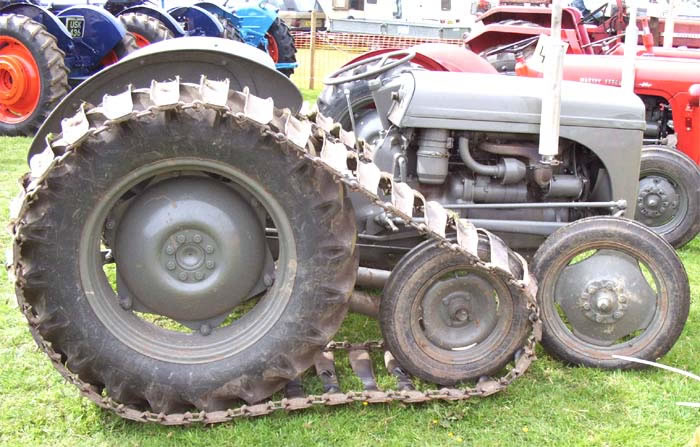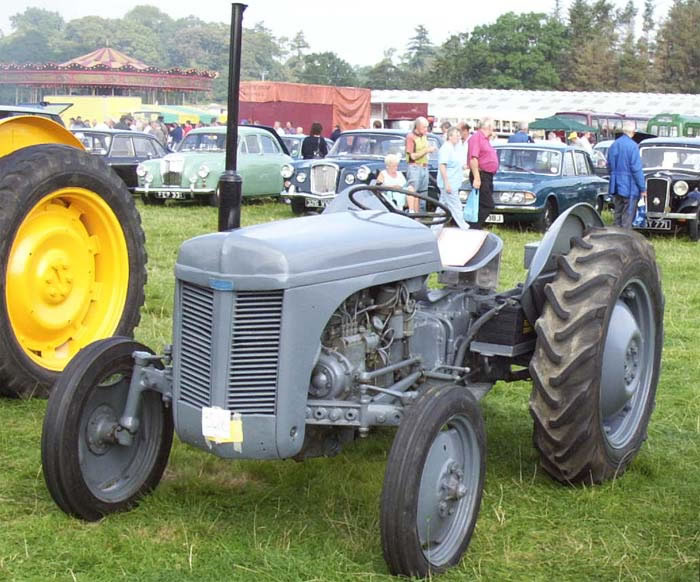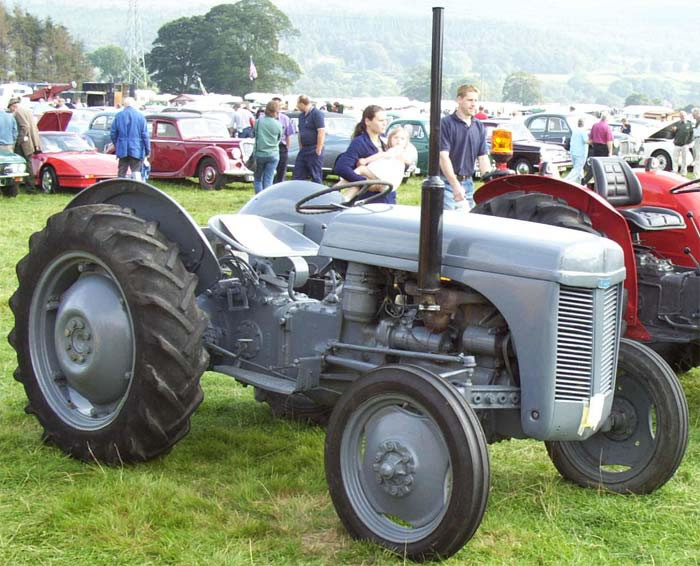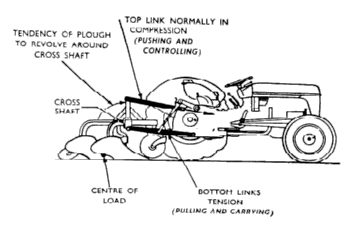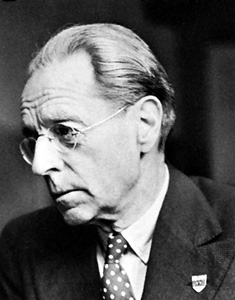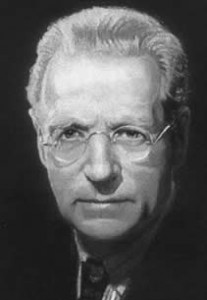 Henry George (“Harry”) Ferguson (November 4, 1884 – October 25, 1960) was an Irish engineer and inventor who is noted for his role in the development of the modern agricultural tractor, becoming the first Irishman to build and fly his own aeroplane, and for developing the first four-wheel drive Formula One car, the Ferguson P99.
Henry George (“Harry”) Ferguson (November 4, 1884 – October 25, 1960) was an Irish engineer and inventor who is noted for his role in the development of the modern agricultural tractor, becoming the first Irishman to build and fly his own aeroplane, and for developing the first four-wheel drive Formula One car, the Ferguson P99.
Today his name lives on in the name of the Massey Ferguson company.
Biography.
Ferguson was born at Growell, near Dromore, County Down, Ireland, and was the son of a farmer. In 1902 Ferguson went to work with his brother Joe in his bicycle and car repair business. Whilst working there as a mechanic he developed an interest in aviation, to the extent of visiting airshows abroad. In 1904 he began to race motorcycles.
Aviation.
In 1909 Ferguson became the first person to fly in Ireland, when he took off on December 31 in a monoplane he had designed and built himself. After falling out with his brother over the safety and future of aviation Ferguson decided to go it alone, and in 1911 founded a company selling Maxwell automobile, Star and Vauxhall cars and Overtime Tractors – eventually to be named Harry Ferguson Limited.Ferguson saw at first hand the weakness of having tractor and plough as separate articulated units, and in 1917 he devised a plough which could be rigidly attached to a Model T Ford car – the Eros, which became a limited success, competing with the Model F Fordson.
Agricultural engineering.
Ferguson eventually founded the Ferguson-Sherman Inc., along with Eber and George Sherman. The new enterprise developed a ploughing system that incorporated a Duplex hitch system which fitted the Fordson line tractors. Ferguson’s new hydraulic system was first seen on the Ferguson-Brown Model A tractors. Ferguson eventually made a handshake agreement with Henry Ford so that Ford could use Ferguson’s three-point hitch system on his new line of tractors (9N, 2N, and 8N). Henry Ford II, Ford’s grandson, abruptly ended the handshake deal on June 30, 1947. Ferguson’s reaction was a law suit demanding $251,000,000 in all. The disagreement was settled by Ferguson in April 1952. A year later Ferguson merged with Massey Harris to become Massey-Harris-Ferguson Co. This merger eventually turned into Massey Ferguson. He also opened the Banner lane plant in Coventry.Ferguson’s research division went on to develop various cars and tractors, including the first Formula One 4 wheel drive car. See Ferguson Research Ltd.
The Ferguson Company.
In about 1934, in company with David Brown, Harry Ferguson formed the Ferguson-Brown Company and the two men produced the Model A Ferguson-Brown tractor with a Ferguson-designed hydraulic hitch. Ferguson surmised that the tractor hitch was the key to having a better plough and designed a simpler tractor attachment for it. In 1938 Ferguson made a handshake agreement with Henry Ford to produce Ferguson System Ford-Ferguson tractors using Ferguson’s own self-regulating three-point hitch system, beginning with the Ford 9N tractor. The three-point hitch soon became the favorite hitch attachment system among farmers in North America and around the world. In 1946 the Ford Motor Company parted from Ferguson and a protracted lawsuit followed involving Ford’s continued use of Ferguson’s patents.
Ford altered the hydraulic design of its postwar tractors to avoid Ferguson’s hydraulic system patent, but continued to produce machines equipped with the basic Ferguson hitch arrangement. Equipped with the three-point hitch, the postwar Ford 8n became the top-selling individual tractor of all time in North America.After the split with Ford, Ferguson took the opportunity to have the Standard Motor Company of the UK produce a new design, the Model TE20. The model name came from Tractor, England 20 horsepower (15 kW) but is affectionately known as the Little Grey Fergie. There were several variants of the TE20; the first tractors were designed to run on petrol, and were known as the TEA20 following the introduction of the TED20 which ran on TVO (tractor vapourising oil, similar to paraffin). Later a diesel model was introduced, the TEF20. There were other variants with narrow wheelbases for working in vineyards and orchards, like the TEB20 and TEC20.
In all over 500,000 Little Grey Fergies were built between 1946 and 1956, and a surprising number survive today. So successful was the TE20 that Ford nicknamed it the “Grey Menace” as sales of the tractor spread across the world. They were even used on an expedition to the South Pole in 1958 by Sir Edmund Hillary, a testament to the durability of the machine. Ford ultimately settled the legal proceedings with a multi-million dollar sum that allowed Ferguson to further expand his own manufacturing interests.
There is a monument in Wentworth on the junction of the Darling and Murray Rivers in Australia commemorating the time in 1956 when both rivers flooded and a fleet of little grey Fergies was used to build levee banks to save the town.
The principal feature of the Ferguson System was the three-point linkage. This allowed trailed implements to be supported on a hydraulic system with the two drag links attached under the rear axle and a single compression link, connected to the upper rear transmission case, that was automatically regulating the hydraulic suspension’s height. Thus the implement could be built at a minimum weight because it needed no attached wheels, manual controls and so on. It was also assisting the tractor to maintain traction because it was applying a combined drag and rotary force to the axle that kept the driving wheels, on that axle, on the ground and the steering wheels held onto the ground too. Consequently the “rearing and bucking” of overloaded tractors was overcome, making tractors much safer.Ferguson designs for tractors were the first with single-wheel brakes that allowed the driver to turn sharply by braking the inside wheel. The TE20 was one of the first tractors to have a four-speed gearbox with integrated Differential and hydraulic system.In 1953 Ferguson and Massey-Harris merged and the combined company Massey-Harris-Ferguson (later shortened to Massey Ferguson) became the manufacturer of the tractors and other designs. By then many manufacturers had developed their own three-point linkages and the linkage had become standardised worldwide.Text source Wikipedia.
Serial Numbers.TE20/TO20/TO30 : The serial number plate is located behind the steering wheel and above the throttle TO35/FE35/F40 : The serial number plate is located on different location on the dash The plate is about 2”x 3” and it is attached with rivets. If you don’t find it, check for holes and rivets. May be it was under many coats of paint or missing. The list of the serial numbers are included below with each model.
Paint. TE-20′s/TO-20′s/TO-30′s were all Ferguson grey very close to the dark grey of Ford/Ferguson 9N, early TO-35′s were grey and green after 1958 they were MF red and grey; in UK, FE-35′s were grey and gold, F-40′s were beige and flint metalic grey, experimental F-40′s were grey and green. After the merge was complete, MF tractors were red and grey. The best match to the Ferguson gray paint is NAPA Gray 99L3740. The best match to the Ferguson beige is Sherwin Williams Gallon of B54W101 Industral Enamel White plus MC15 Gold 48/32 oz. plus Black 6/32 oz.
